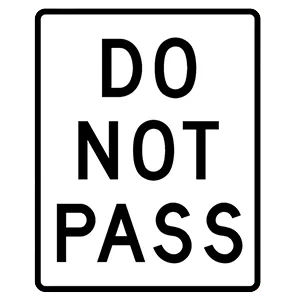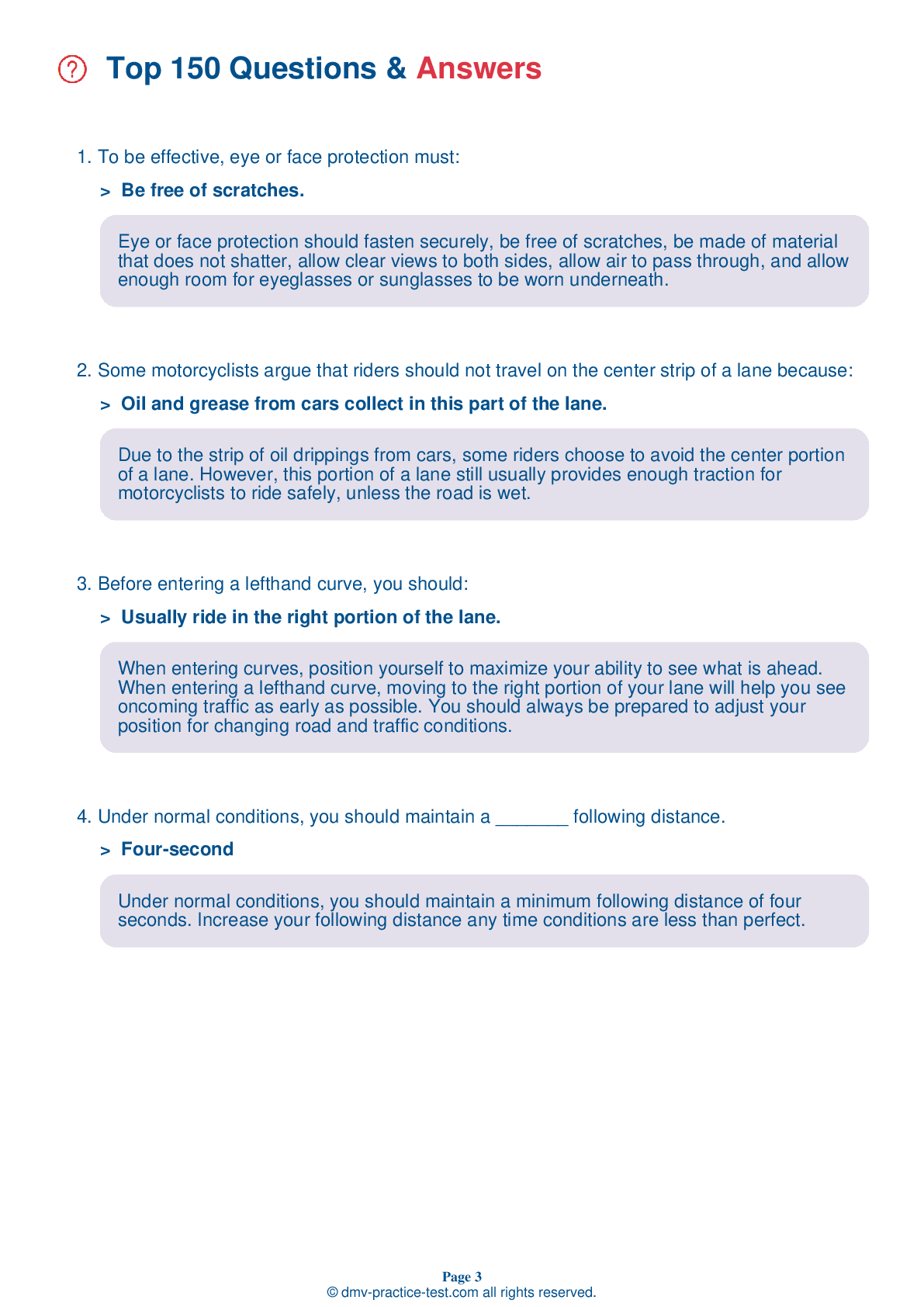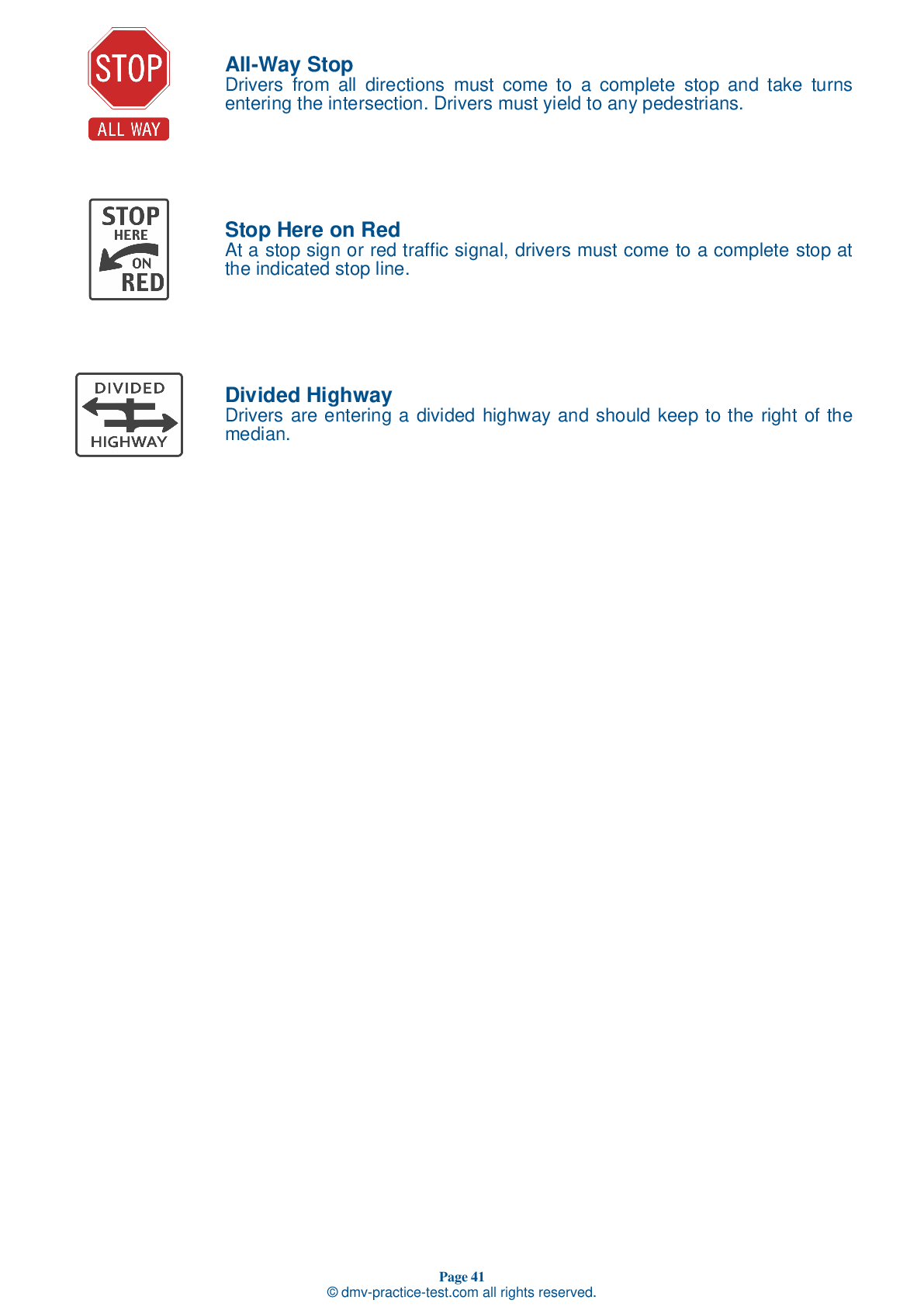Motorcycle Test | License AK 2025 | FREE Online Practice! #12
Take this FREE motorcycle test (license in AK 2025) to check your knowledge of the road rules. To improve your results, download a motorcycle handbook online, study theory, and practice for free on our website. Still worried about how to get a motorcycle license in Alaska in 2025? Check our website for more sample tests, train as much as possible, and boost your grades!
1 . When braking where traction is reduced, you should:
When slowing or stopping on a surface with reduced traction, you should use caution and apply the brakes more gently than usual.
2 . If you see this sign, you:

Regulatory signs are white, rectangular signs with black markings. Drivers must obey the instructions posted on all regulatory signs. Where this sign is posted, it is prohibited for drivers to pass one another.
3 . This road sign means:

This type of triangular sign means drivers must yield. You must slow down as you come to an intersection marked with this sign and be prepared to stop. Let any other vehicles, bicyclists, or pedestrians pass safely before you proceed.
4 . To be effective, eye or face shield protection must be all of the following, except:
To be effective, an eye or face shield must be free of scratches; be resistant to penetration; allow clear views to both sides; fasten securely; permit air to pass through to prevent fogging; and allow room for eyeglasses or sunglasses, if needed.
5 . When riding a motorcycle that you are unfamiliar with, you should do all of the following, except:
When using a motorcycle that is new to you, make all of the same safety checks that you would on your own motorcycle. Make sure that you know where all the controls are located and check them to ensure that you know the gear pattern. Ride with special caution until you get used to how the motorcycle handles.
6 . This sign shows one type of:

This sign indicates that a T intersection is ahead.
See the exact questions that will be on the 2025 Alaska DMV exam.
99.2% of people who use the cheat sheet pass the FIRST TIME
Jeneen was tired of paying $5/gallon. She got herself a scooter that required the motorcycle license. She studyed the motorcycle test cheat sheet and passed her test the next day!
Christopher tells us how he knew nothing prior to obtaining the motorcycle study guide, and he only got one question wrong because he clicked on the wrong answer by mistake.



